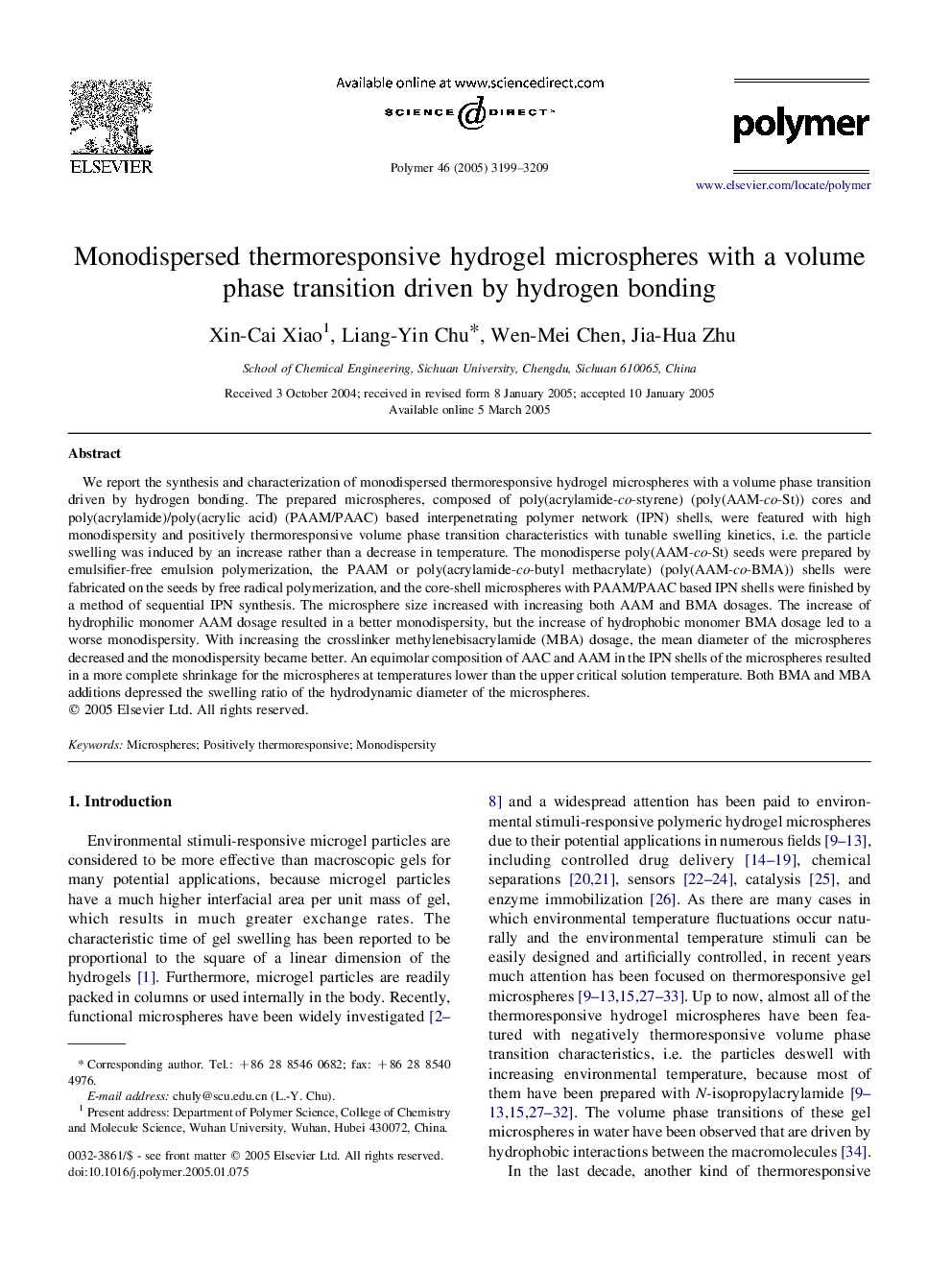| Article ID | Journal | Published Year | Pages | File Type |
|---|---|---|---|---|
| 5190135 | Polymer | 2005 | 11 Pages |
Abstract
We report the synthesis and characterization of monodispersed thermoresponsive hydrogel microspheres with a volume phase transition driven by hydrogen bonding. The prepared microspheres, composed of poly(acrylamide-co-styrene) (poly(AAM-co-St)) cores and poly(acrylamide)/poly(acrylic acid) (PAAM/PAAC) based interpenetrating polymer network (IPN) shells, were featured with high monodispersity and positively thermoresponsive volume phase transition characteristics with tunable swelling kinetics, i.e. the particle swelling was induced by an increase rather than a decrease in temperature. The monodisperse poly(AAM-co-St) seeds were prepared by emulsifier-free emulsion polymerization, the PAAM or poly(acrylamide-co-butyl methacrylate) (poly(AAM-co-BMA)) shells were fabricated on the seeds by free radical polymerization, and the core-shell microspheres with PAAM/PAAC based IPN shells were finished by a method of sequential IPN synthesis. The microsphere size increased with increasing both AAM and BMA dosages. The increase of hydrophilic monomer AAM dosage resulted in a better monodispersity, but the increase of hydrophobic monomer BMA dosage led to a worse monodispersity. With increasing the crosslinker methylenebisacrylamide (MBA) dosage, the mean diameter of the microspheres decreased and the monodispersity became better. An equimolar composition of AAC and AAM in the IPN shells of the microspheres resulted in a more complete shrinkage for the microspheres at temperatures lower than the upper critical solution temperature. Both BMA and MBA additions depressed the swelling ratio of the hydrodynamic diameter of the microspheres.
Keywords
Related Topics
Physical Sciences and Engineering
Chemistry
Organic Chemistry
Authors
Xin-Cai Xiao, Liang-Yin Chu, Wen-Mei Chen, Jia-Hua Zhu,
